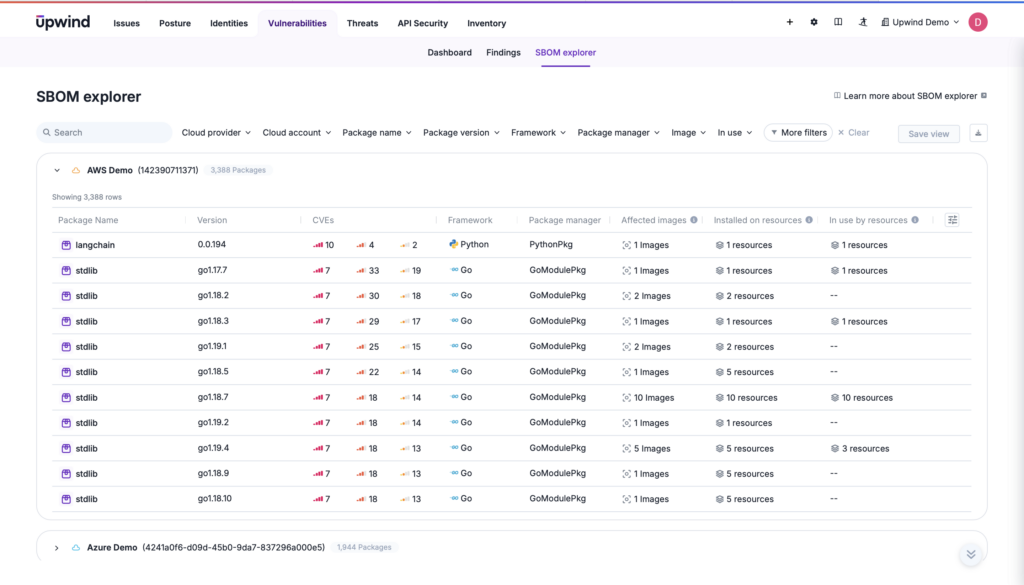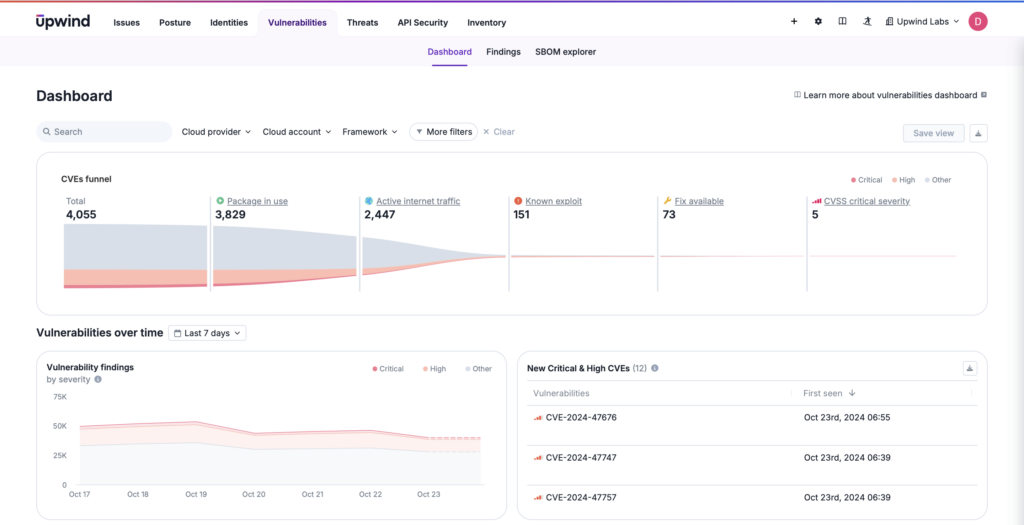
Since the mid-2010s, teams have increasingly managed security tasks alongside development. The emergence of DevSecOps has helped organizations shift security left and incorporate security earlier in the development process, though that approach hasn’t always helped with agility and scaling. We’re looking at what secure SDLC solutions look like, including their real-world challenges.
What is SDLC?
Secure SDLC (also called SSDLC) is a methodology that integrates security at every phase of application development, from design and coding to maintenance. It distributes security ownership across teams and brings unified tools to previously siloed processes.
Secure SDLC goals include shifting left for earlier detection of security vulnerabilities and maintaining software integrity and compliance. Secure SDLC can be achieved via a combination of practices, tools, and priorities:
- Using automation tools
- Adopting a shift left mindset
- Implementing secure coding standards and design practices
- Instituting security monitoring and reporting guidelines
- Holding regular security trainings
Ultimately, secure SDLC is predicated on the idea that examining code during the build phase, where it is faster and simpler to fix, can sidestep costlier fixes later in the development lifecycle. Infusing security throughout the lifecycle includes a focus on the early-stage DevSecOps approach.
Challenges of SDLC
In a world where the attack surface is expanding and has seen a wider range of threats than ever, with data breaches in 2024 that have already exposed one billion records, it’s increasingly critical for organizations to adopt comprehensive security measures that proactively address vulnerabilities using secure coding practices.
The problem with a shift-left approach like secure SDLC is that it’s time-consuming to examine code during the build phase for hypothetical issues that may not create critical vulnerabilities post-deployment. As businesses scale, the resources utilized to shift security throughout the build lifecycle scale, too.
Global cybersecurity spending is up 12.5% as threat volumes have skyrocketed, almost doubling from 2021 to 2022.
Organizations need to expand their investment in time, personnel, and tools to integrate security practices throughout the development process.
While secure SDLC’s proactive stance aims to identify and mitigate issues before deployment, two core challenges arise when relying on secure SDLC practices without incorporating runtime or workload insights.
- Integration and Resource Allocation Complexity
Integrating new tools, workflows, and roles for development teams can all lead to delays in the development timeline. Additionally, new resource allocations emerge alongside the need to uplevel security expertise across development teams while keeping production times unaffected. In the end, secure SDLC emphasizes security checks that may extend development time, as developers need to meet security criteria before releasing new features and updates.

2. False Sense of Security
Relying on secure SDLC requires confidence that addressing security issues at build time will lead to fewer vulnerabilities at runtime. But that’s not always the case. First, shift-left tools can’t catch every potential issue — they offer only limited threat detection. Second, they can’t catch issues that emerge at runtime in the dynamic cloud environment. Without runtime insights, teams can overlook critical vulnerabilities that could be exploited after deployment.

Secure SDLC Alternatives
For organizations concerned about the upfront resource demands or the misconception that secure builds will prevent all runtime issues, a broader, continuous security strategy can help balance the approach. Instead of solely focusing on the development (shift left) or deployment phases, runtime monitoring, detection, and response to threats offer an additional layer of protection. It adds critical capabilities, such as addressing dynamic security risks like emerging vulnerabilities, plus allows runtime insights to inform build-phase strategies for more targeted integration.
“Upwind leverages runtime context and infuses it into all of our recommendations. By observing a user’s runtime environment, we can provide real-time findings and granular remediation – helping teams focus on what’s critical and fix real risks faster.”
Joshua Burgin I CPO, Upwind
The Desired Benefits of SDLC
The promise of Secure SDLC is that organizations can inspect the parts of their software before they build, ensuring secure software from the beginning. That’s been an appealing option, though these benefits can often be overshadowed by the noise that comes from looking at every issue, slowing the gears of development.
Secure SDLC hopes to achieve:
Enhanced Software Security
Inspecting software for issues from the onset allows for better security outcomes, including:
- Reduced number of vulnerabilities in deployed software releases
- Improved code quality with fewer security flaws
- Enhanced API security and better handling of third-party components
- More secure software architectures
Early Detection and Mitigation of Security Issues
Earlier detection is itself a goal of secure SDLC, including:
- Identification of vulnerabilities at the earliest stages of development
- Improved threat modeling during the design phase
- Faster implementation of patches and updates
- Reduced false positives in security alerts
Streamlined Security Processes
While it takes commitment to institute new workflows, building security processes into development comes with the hope of long-term benefits like:
- Increased automation of security checks throughout the CI/CD pipeline
- Standardized security practices across development teams
- Efficient vulnerability management processes
- Integration of tools into the development workflow
Comprehensive Security Testing
Secure SDLC prioritizes testing, so companies that adopt this approach look to gain:
- Improved security testing coverage
- Enhanced penetration testing and vulnerability assessments
- Regular security controls in the development lifecycle
- Systematic evaluation of third-party libraries and dependencies
Improved Security Documentation
Earlier software security comes with earlier documentation, so companies can show how they’re keeping compliant, including:
- Comprehensive and up-to-date documentation of security standards
- Adopting better traceability of security policies and actions
- Creating clearer security requirements
- Enhancing audit trails
Adaptive Security Posture
Earlier security workflows may lead to better adaptability in the form of:
- Faster response to emerging security threats and vulnerabilities
- Continuous improvement of security measures within the software development process based on feedback and new insights
- More flexible and resilient security architecture to accommodate changes
- Improved ability to meet evolving regulations
Ultimately, achieving the advantages of secure SDLC without any of the difficulties of a stringent shift-left approach may be possible with a more balanced approach that augments secure SDLC with a security strategy incorporating runtime and workload insights. Organizations can remain agile by responding to real-time threats without giving up the proactive approach of secure SDLC.
Approaches to Security, Including SSDLC
By incorporating runtime insights into their security framework, organizations can address vulnerabilities in real-time and respond to threats faster while minimizing the challenges associated with a strict SSDLC approach.
This table outlines the differences between secure SDLC methods alone versus incorporating a runtime approach, alongside differences in tech outcomes.
| SSDLC Approach | Runtime Insights | Tech Outcomes | |
| Vulnerability detection | Focuses on static analysis and code reviews pre-deployment | Provides real-time monitoring of application behavior | Improved identification of live vulnerabilities |
| Threat response | Limited to known issues | Enables dynamic response to emerging threats | Faster remediation of security incidents in production |
| Security context | Lacks contextual awareness of runtime conditions | Contextualizes alerts based on application use | More informed decision-making for security teams |
| Integration complexity | Often requires significant changes to workflows | Can operate independently, reducing integration hurdles | Streamlined adoption |
| Resource allocation | Demands resources and training | Less resource-intensive as it provides ongoing insights | Better allocation of security resources for immediate needs |
Tool Categories and Alignment with Secure SDLC
Diverse tool categories are emerging to meet the needs of organizations along the software development lifecycle.
Tools like cloud access security broker (CASB), cloud workload protection platforms (CWPP), static application security testing (SAST), secure access service edge (SASE), and cloud infrastructure entitlement management (CIEM) support the principles of secure SDLC by integrating security throughout development and deployment.
For example:
- SAST tools help identify vulnerabilities early in the development lifecycle, analyzing source code before it is compiled or deployed.
- CSPM tools help maintain secure configurations in cloud environments, boosting compliance goals.
- CWPP solutions protect applications and data during runtime.
- Comprehensive solutions, like CNAPP, combine functions like detection, analysis, and mitigation into a single platform.
Upwind Uses a More Holistic Approach
Secure SDLC is one approach for organizations aiming to reduce security risks from the ground up. While frameworks like these provide strong foundations, adapting them to the complex reality of cloud security is still a challenge.
By addressing these challenges in a holistic approach that includes runtime insights, organizations can enhance their security posture while maintaining efficiency in their development processes.
Comprehensive CNAPP platforms like Upwind help security teams gain the comprehensive cloud security they need without sacrificing agility. Book a demo to see how.
FAQ
What is the difference between secure SDLC and DevSecOps?
DevSecOps is cultural. It is an approach to software development that focuses on collaboration between development, security, and operations teams. DevSecOps is designed to maintain the agility of development teams while incorporating security in a shift-left approach.
Secure SDLC is methodological. It’s an approach that focuses on practices, and it’s applicable across various development approaches, each with various checkpoints and stages for security. It focuses on incorporating security broadly across stages of development and deployment.
What is security in SDLC?
Security in the software development lifecycle is integrating security practices into the entire software development process. From coding standards to testing and training, multiple best practices go into this type of “security.” Taken together, they help address security concerns in cloud ecosystems.
Is SDLC different from agile? Is SDLC the same as waterfall?
SDLC is a broad framework that can include different workflow approaches to software development from agile to waterfall. While waterfall is a linear approach to software development, agile is more flexible and iterative. Both are methodologies that fall under the umbrella of the software development lifecycle.
Secure SDLC can apply to waterfall and agile approaches, with different recommendations for security practices depending on a team’s preferred build method.
What is the SDL lifecycle?
The security development lifecycle (SDL) is often used interchangeably with secure SDLC. However, SDL is a secure SDLC associated with Microsoft, incorporating a specific set of guidelines regarding development, from testing to training. Secure SDLC practices go beyond the Microsoft approach, applying to any approach incorporating security into the SDLC.
What are the Types of Secure SDLC Methodologies?
Secure SDLC isn’t a directive; it’s an approach that includes attention to security at multiple phases of software application development.
- Planning: When teams define project scope
- Analysis: When teams detail software requirements, understanding user needs and use cases
- Design: When software plans are mapped with architecture, user interfaces, and tech specifications
- Development: When teams build software to the specifications in previous steps
- Testing: When software gets scrutinized for bugs
- Deployment: When software becomes operational and users can access it
- Maintenance: When teams update software, add new features, eliminate defects, and optimize performance
Though all software development involves these phases, ideas about how secure SDLC should address each phase differ. Here’s a quick look at widely adopted secure SDCL methodologies.
- Microsoft Security Development Lifecycle (SDL) focuses on threat modeling and secure coding. The approach emphasizes security training for developers, Includes threat modeling during the design phase, and integrates security testing throughout development
- OWASP Software Assurance Maturity Model (SAMM) focuses on governance, construction, verification, and operations. It provides a risk-based approach, organizes practices into 5 business functions (governance, design, implementation, verification, and operations), and offers maturity levels for each practice
- Building Security in Maturity Model (BSIMM) focuses on software security initiatives. It’s based on real-world data from organizations, focuses on describing practices rather than prescribing actions, and provides a framework for comparing organizations.
- NIST Secure Software Development Framework (SSDF) focuses on secure software development practices. It aligns with existing software development practices, focuses on integrating security throughout the SDLC, and provides flexibility to integrate practices into existing workflows
- BSA Framework for Secure Software focuses on security capabilities and secure software development. It uses a risk-based approach to identify security parameters at the organizational level, utilizes a matrix of activities, categories, diagnostic statements, and implementation notes, and offers a holistic treatment of security considerations
Which secure SDLC approach is most compatible with DevSecOps?
DevSecOps is itself an approach that unites development, security, and infrastructure as code (IaaS) in a continuous cycle. It inherently integrates security through the software development lifecycle. DevSecops can include elements of the other models. For instance, the NIST framework can be incorporated into DevSecOps practices. Microsoft’s SDL can also fit DevSecOps principles.
Overall, there isn’t a one-size-fits-all approach to SSDLC. Organizations have options depending on their size, needs, industry, and existing processes.






